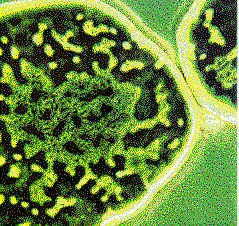 One way to avoid biopiracy is to document a nation's cultural and environmental heritage. Traditional Knowledge libraries are a good step towards the former, and now Brazil has given us an example of the latter.
One way to avoid biopiracy is to document a nation's cultural and environmental heritage. Traditional Knowledge libraries are a good step towards the former, and now Brazil has given us an example of the latter.
The Brazilian Collection of Environmental and Industrial Microorganisms -- better known as the Brazilian Microbe Bank -- is a recently-opened repository of information about native microorganisms. The researchers in charge of the bank have collected detailed information on and examples of 700 types of microbes, with facilities for maintaining up to 12,000.
The collection includes microorganisms originating in soil, water and plants in different Brazilian ecosystems, such as the Atlantic rainforest and the cerrado, a kind of savanna. Other specimens were isolated from petroleum reserves and oil fields.
The Unicamp team also developed software for managing information about the microorganisms, such as their identity, place of origin, conditions needed to grow them in laboratory conditions, photographs and information on their genetic material.
The bank is online (in Portuguese, the name is Coleção Brasileira de Microrganismos de Ambiente e Indústria, or CBMAI). The home page includes a button to switch to an English translation; unfortunately, it doesn't seem to work. Any Portuguese-speakers want to poke around the site and give us a first-hand account of what you find?
Comments (2)
The article you cite does a good job of covering the information on CBMIA's website, with a few interesting exceptions. The article mentions the public access section of the collection, but it fails to mention the fact that the database will be searchable online:
"SIAM is a relational database which can be searched to find information about stored microorganisms, such as basic information on the origin and place of isolation, who deposited the sample, the conditions of the cultivation and history of the line, and/or specific information relevant to taxonomic classification, properties and applications, when available, and gene sequences (e.g., rDNA 16S), enzymes and catalytic reactions, among others."
SIAM must be a new project, since the link to the database project presently 404s, but it will certainly be of interest when it's up.
The legal requirements mentioned in the article are linked as well. They mention using the classification system of the European Community to classify the degree of biohazard for their specimens, and also a Brazilian system which seems parallel: "Genetically modified organisms are accepted when they fall into groups 1 or 2 of the Brazilian Classification (CTNBio) or Classes 1 and 2 of European Community."
Other than that the site has standard scientific boilerplate: funding sources, descriptions of courses offered by the organization, and CVs of faculty.
Até logo!
Pat
Posted by Patrick Hall | March 27, 2005 12:32 PM
Posted on March 27, 2005 12:32
Patrick -- thank you *very* much for the added information!
Posted by Jamais Cascio | March 31, 2005 5:05 PM
Posted on March 31, 2005 17:05